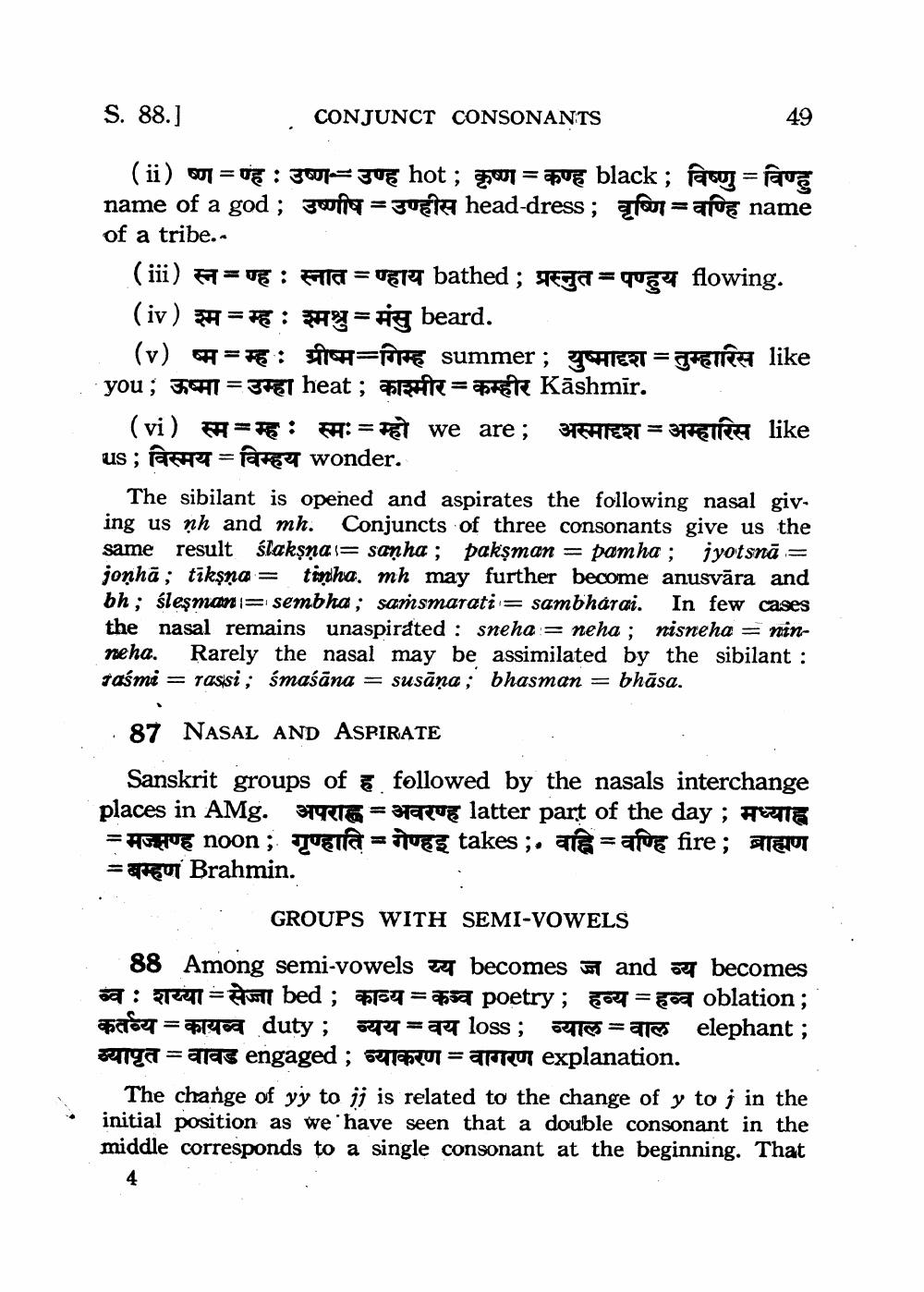________________
S. 88.]
CONJUNCT CONSONANTS
(ii) ष्ण = ण्ह : उष्ण= उण्ह hot; कृष्ण = कण्ह black ; विष्णु =विण्हु name of a god ; उष्णीष = उण्हीस head-dress; वृष्णि = वण्हि name of a tribe..
(iii) स्न= ण्ह : स्नात = हाय bathed ; प्रस्नुत = पण्हुय flowing. (iv) श्म =म्ह : श्मश्रु =मंसु beard.
(v) म = म्ह: ग्रीष्म-गिम्ह summer ; युष्मादृश = तुम्हारिस like you; उष्मा = उम्हा heat; काश्मीर = कम्हीर Kashmir.
(vi) स्म= म्ह: स्मः =म्हो we are ; अस्मादृश = अम्हारिस like us ; विस्मय = विम्हय wonder.
The sibilant is opened and aspirates the following nasal giying us nh and mh. Conjuncts of three consonants give us the same result ślakşnai= sanha; pakşman = pamha; jyotsnā = jonhā; tikşna = tinha, mh may further become anusvāra and bh; śleşmani= sembha; saṁsmarati= sambharai. In few cases the nasal remains unaspirated : sneha = neha; nisneha = ninneha. Rarely the nasal may be assimilated by the sibilant : Taśmi = Tassi ; śmaśāna = susāna; bhasman = bhāsa.
.87 NASAL AND ASPIRATE
Sanskrit groups of followed by the nasals interchange places in AMg. अपराह्न = अवरण्ह latter part of the day ; मध्याह =मझण्ह noon; गृण्हाति = गेण्हइ takes ;. वह्नि = वण्हि fire; ब्राह्मण बम्हण Brahmin.
GROUPS WITH SEMI-VOWELS 88 Among semi-vowels zy becomes 7 and 4 becomes ब्व : शय्यासेज्जा bed ; काव्य कञ्व poetry; हव्य हव्व oblation; कर्तव्य =कायब्व duty; व्यय = वय loss; व्याल =वाल elephant; व्यापृत = वावड engaged ; व्याकरण = वागरण explanation.
The change of yy to jj is related to the change of y to j in the initial position as we have seen that a double consonant in the middle corresponds to a single consonant at the beginning. That




